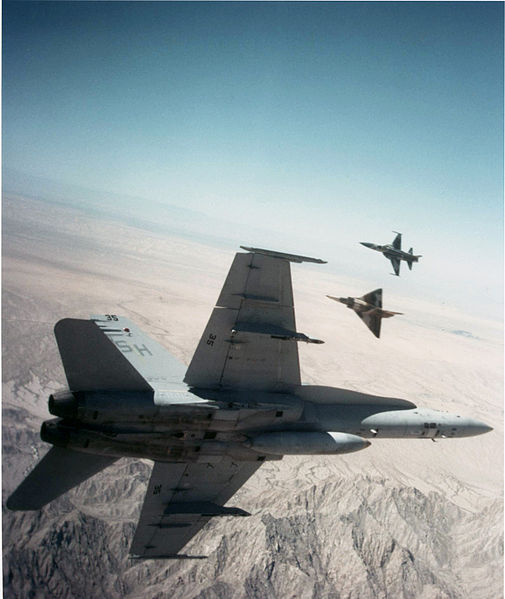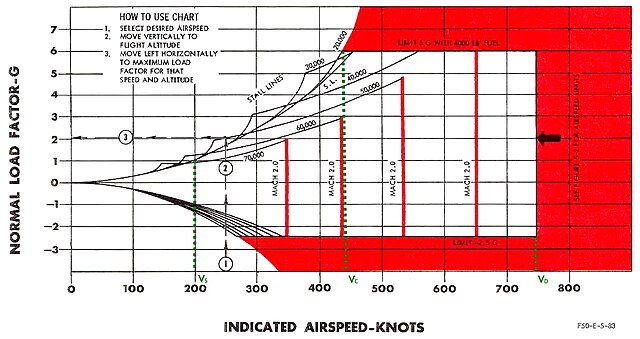Basic fighter maneuvers (BFM) are tactical movements performed by fighter aircraft during air combat maneuvering, to gain a positional advantage over the opponent. BFM combines the fundamentals of aerodynamic flight and the geometry of pursuit, with the physics of managing the aircraft's energy-to-mass ratio, called its specific energy.
Four P-40 Warhawks performing training maneuvers.
An F-22 Raptor (left) during training maneuvers against an F-15E Strike Eagle.
A Japanese A6M3 Zero in cold-side lag pursuit behind a US B-25 Mitchell.
Turn circle geometry. Even though depicted as flying at the same turn rate and turn radius, closure occurs during lead pursuit and then reverses during lag pursuit, with the greatest nose/tail separation at the moment the attacker pulls lead.
Air combat manoeuvring (ACM) is the tactic of moving, turning, and situating one's fighter aircraft in order to attain a position from which an attack can be made on another aircraft. Commonly associated with dogfighting, air combat manoeuvres rely on offensive and defensive basic fighter manoeuvring (BFM) to gain an advantage over an aerial opponent.
A United States Marine Corps F/A-18A Hornet engaged in air combat maneuvering training with IAI Kfir and F-5E Tiger II aggressors near Marine Corps Air Station Yuma in 1989
A flight envelope diagram showing VS (stall speed at 1G), VC (corner speed) and VD (dive speed)






